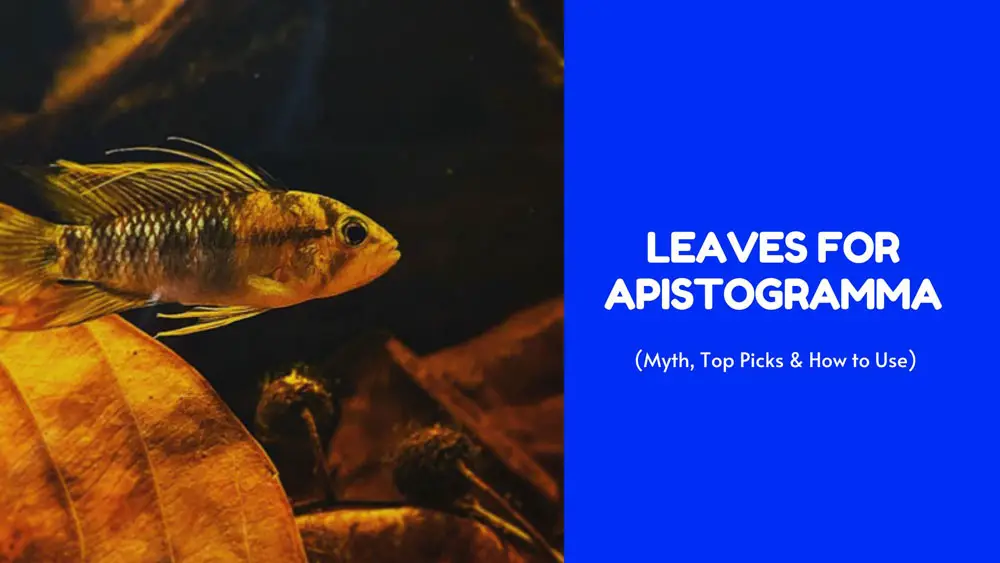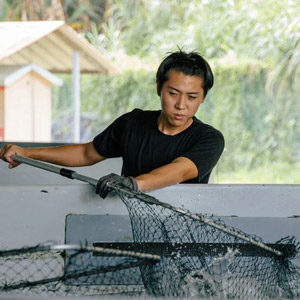Are you a passionate aquarium enthusiast looking to breed Apistogramma species? If so, there is one thing you absolutely must get right: the water conditions.
Originating in South America, these delicate dwarf cichlids are found in slow-moving streams and tributaries beneath dense forest canopies, where the water is naturally soft and acidic from the decaying leaves, wood, and other organic matter.
Over the years, the characteristics of their native habitats have led to a common misconception that adding some plant materials like dried tree leaves and driftwood can easily lower aquarium pH and create a Rio Negro biotope aquarium.
But is that really the case? Join us as we explore the truth behind this myth and reveal which leaves are best suited for your Apistogramma tank.
Do Leaves Help Lower pH in an Apistogramma Aquarium?
When you drop some leaves into your Apistogramma aquarium water, they gradually decompose and release tannins, which are plant-based substances that slowly tint the water with a yellow-brown coloration. However, these leaves can only lower the pH in aquariums with low or zero carbonate hardness levels (KH<5).
KH, or Carbonate Hardness, is primarily determined by the concentration of bicarbonate (HCO3-) and carbonate (CO32-) ions in the water. These ions act as buffers, helping neutralize any acids or bases added to the water.
That is to say, if you simply put the foliage in your Apistogramma fish tank with hard, alkaline tap water, the weak tannic acid present won’t affect the pH level other than coloring the water and increasing levels of total dissolved solids (TDS).
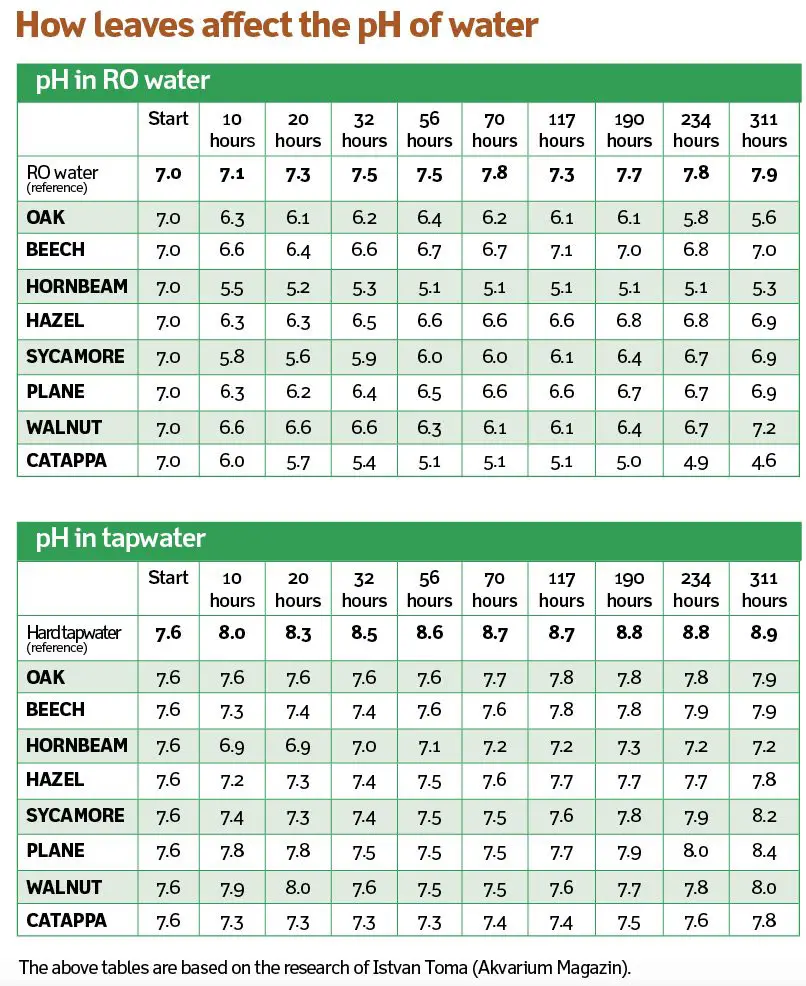
Myth: Leaves or Tannins Will Soften Water
Aquarium water hardness (referred to as GH for short) measures the amount of mineral cations in water, with the most abundant being calcium (Ca2+) and magnesium (Mg2+) ions.
While the tannic acid will react with mineral cations, causing them to form complexes and precipitate out of the water, the extent of the softening effect is extremely limited and short-lived in those areas with hard water.

If you live in an area with hard water and want to soften it for your Apistogramma fish, you’ll need to use a reverse osmosis (RO) system to filter the mineral cations. You can also collect rainwater from your roof or directly buy RO water from Walmart, Walgreens, Target, and Whole Foods.
More Benefits of Leaves in Apistogramma Aquariums

On top of helping to lower pH, using leaves in your freshwater aquarium offers numerous advantages for both the tank environment and the well-being of your aquatic pets. Let’s explore some of them:
Promote Humic Substances Formation – Humic substances are large, complex molecules produced by the decay of organic matter (such as leaves). They help to form a strong biological foundation in your tank, binding with trace elements and providing essential minerals for beneficial bacteria and fauna. This is especially important in Apistogramma fry growth.
Provide Natural Shade and Cover – Leaves offer shade and cover for Apistogramma species as they are bottom dwellers.
Alter Tank’s Aesthetics – The brown/yellow tint released by leaves adds a natural, wild-looking feel to your aquarium. Apistogramma species are known for their brightly colored patterns and vibrant colors, and adding some floating plants, driftwood, or leaves helps bring out these unique visual displays.
Act as An Antibacterial Agent – These leaves contain various phenolic compounds, such as flavonoids, coumarins, phenolics, and triterpenoids, which act as natural antibiotics. This helps to protect fish against bacterial and fungal diseases in your tank.
12 Leaves are Best for Apistogramma?
Not all leaves are created equal when it comes to lowering pH in an aquarium—some are far better than others.
We have listed 12 popular leaves below and how they improve your South American biotype or blackwater aquarium environment.
Catappa (Indian Almond) Leaves

Catapaa leaves, also known as Indian almond or Ketapang leaves, have been widely used for decades in fish farms as an antibacterial and antifungal water treatment.
The size varies from seller to seller, but they usually measure around 4-7 inches (10-18 cm) long and can produce a brown tint in aquarium water. Start with one leaf per 5 gallons of water, and increase it until the desired color is achieved.
Oak Leaves
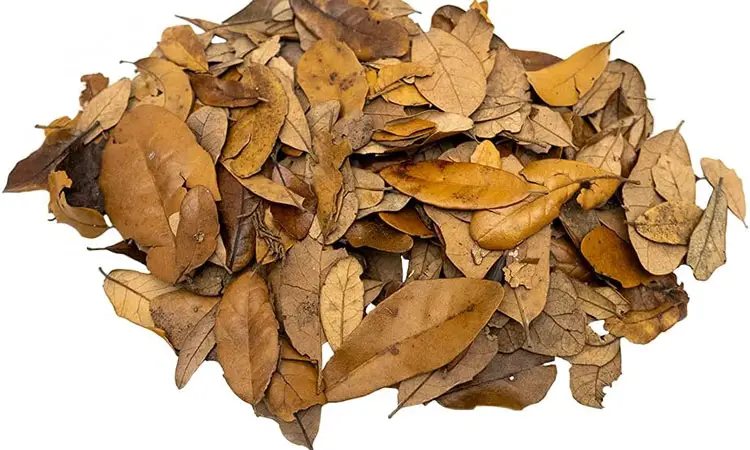
Oak leaves are the most common type used in aquariums due to their availability, tannin content, and ability to lower pH. There are dozens of oak species in North America, and they are divided into two main categories: red oaks and white oaks.
The former makes particularly good choices for aquariums because they decompose slowly, impart a beautiful dark brown/red hue to the water, and have great shape.
Japanese Maple Leaves

Japanese maple leaves are an interesting and attractive addition to your aquarium due to their leaf shape and texture. These leaves tend to break down much quicker than Indian almond leaves.
Hazel Leaves

Hazel leaves are another leaf litter for lowering the pH in your Apistogramma fish tank. The leaves of common hazel (Corylus avellana) are slightly bigger and thicker, but they will last just as long as Catapaa leaves.
However, it does not tint the water deeply and has a milder acidifying effect, which might require more leaves for larger tanks.
Hornbeam Leaves
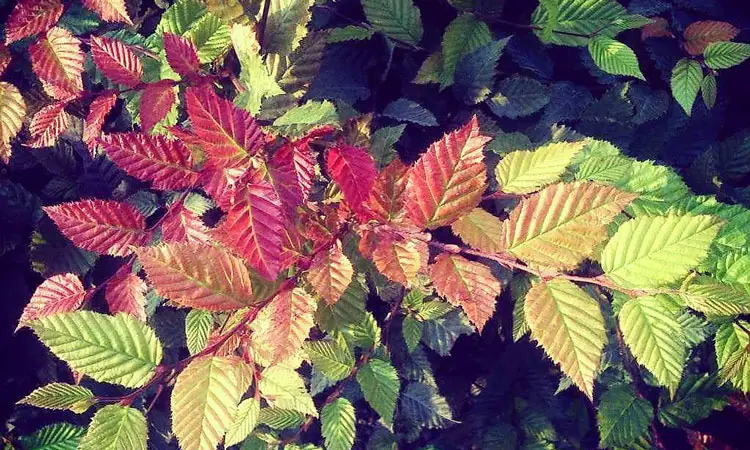
Hornbeam leaves are a popular choice among owners of nano tanks because of their smaller size, typically measuring between 1.5-3.5 inches (4-9 cm) in length.
They decompose rapidly and can quickly lower the water’s pH, similar to the effect of Catappa leaves. Therefore, you may need to replace them more often.
Sycamore Leaves
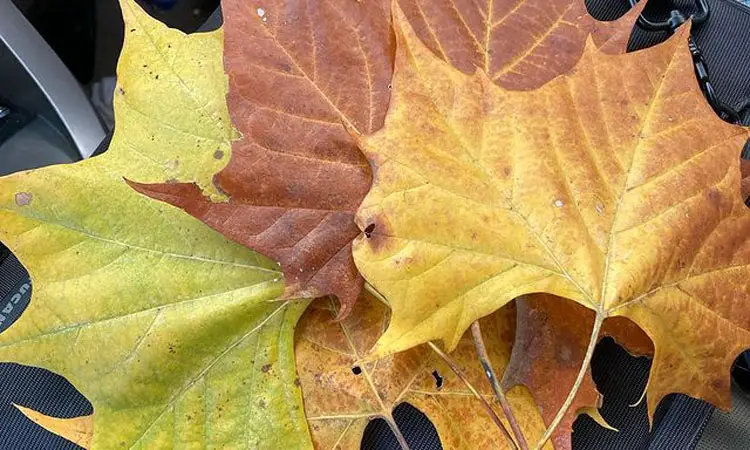
Sycamore leaves have a similar appearance to maple leaves, but they typically have shallower lobes and are arranged alternately on the branch.
Like Hornbeam leaves, Sycamore leaves have a strong and rapid coloring effect when added to aquarium water. However, they decompose quickly and have a short-lived ability to reduce the pH of the water. If not replaced, the pH level will rise again over time.
Magnolia Leaves
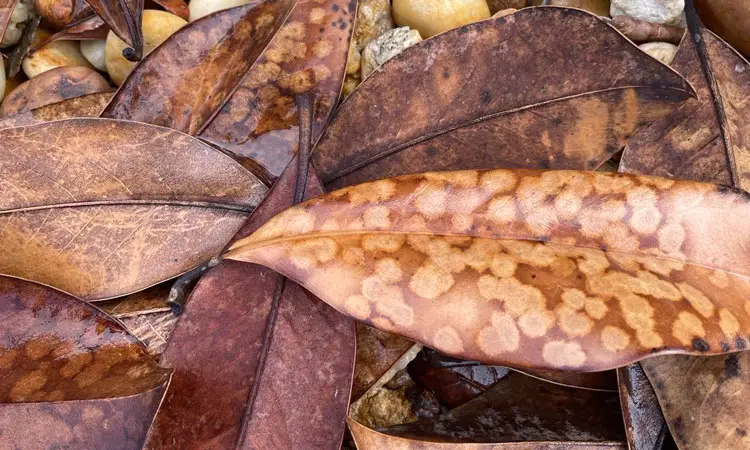
Adding magnolia leaves to your Apistogramma tank offers similar benefits as Catappa leaves because they can produce phenolic antimicrobial compounds to exert antimicrobial effects.
These leaves come in a variety of colors, ranging from oranges to browns, which makes them an appealing addition to a mixed leaf litter bed in a blackwater aquarium.
Guava Leaves

The leaves of the guava tree (Psidium guajava) are rich in antibacterial properties and can boost the overall health of your Apistogramma aquarium.
They are popular with dwarf cichlid hobbyists who like to add dried leaves that dissolve much more slowly. In addition, their coloring makes them especially attractive for recreating a natural habitat for Apistos.
Mangrove Leaves
Natural Mangrove leaves have been used by Apistogramma keepers for years to maintain a stable, acidic environment.
They are small in size, durable, and last longer, so they can be used to add depth to your aquarium. They don’t strongly tint the water, but they do impart an amber-brown hue.
Jackfruit Leaves
These tropical botanicals provide a good alternative for conditioning aquatic habitats and are known for their aesthetics, abundance of antibacterial properties, and phytonutrients.
As you can see, they have a very solid shape that brings a nice effect to your aquarium with a beautiful golden-brown color.
Mulberry Leaves
Like jackfruit leaves, mulberry leaves are a highly beneficial leaf litter to Apistogramma aquariums. Not only do they provide an aesthetically pleasing Nature style habitat, but they also serve as a natural food source for shrimp and snails.
Banana Leaves
Did you know that banana leaves possess the highest concentration of tannins among agricultural wastes and are considered a potent source for manufacturing leather in tanning processing and wood adhesive?
In the freshwater aquarium, aquarists often use dried banana leaves to add a natural look and flavor to their tank. As they decompose, they slowly release tannins and other beneficial substances into the water that can help soften it and reduce pH levels.
How to Use Leaves in Apistogramma Tanks?
To prepare these leaves for your aquarium, first, rinse them under running water to remove any dirt or debris. Then, you can either let them air-dry or brew them over with some boiling water to make them sink immediately.
Don’t boil or pre-soak them for too long. Otherwise, they will lose their natural tannins and color quickly, and you don’t get their benefits.
When adding the leaves to your aquarium, simply place them on the water’s surface, and they will slowly sink to the bottom after a week, or you can weigh them down with a decoration.
FAQ:
Do Beech Leaves Lower the pH in An Aquarium?
Beech leaves are low in tannins and will only slightly reduce the pH.
How Many Leaves Should I Put in My Aquarium?
It depends on your tank size, tap water parameters, the type of leaves you are using, and the desired water conditions, like pH and TDS.
As a general rule of thumb, start with a few leaves and monitor your water parameters for any changes. Adjust the number of leaves accordingly to reach your desired results.
Can I Collect Leaves from Outside for My Apistogramma Aquarium?
Yes, you can do so, but only if you are certain they have not been exposed to any chemicals or pollutants, such as fertilizers and pesticides. Damaged or rotten leaves should also be avoided.
Last Words
While adding leaves to your aquarium can help lower its pH, it is important to note that this method does not act as a miraculous fix. Adjusting pH should be a gradual process to prevent stressing your Apistogramma fish.
Next time you are thinking of using leaves effectively to lower the pH, get an RO/DI unit or buy RO water to supplement your water changes.
Speaking of Apistogramma tank set-up, check out our comprehensive section to help you create a suitable environment for these beautiful dwarf cichlids.
